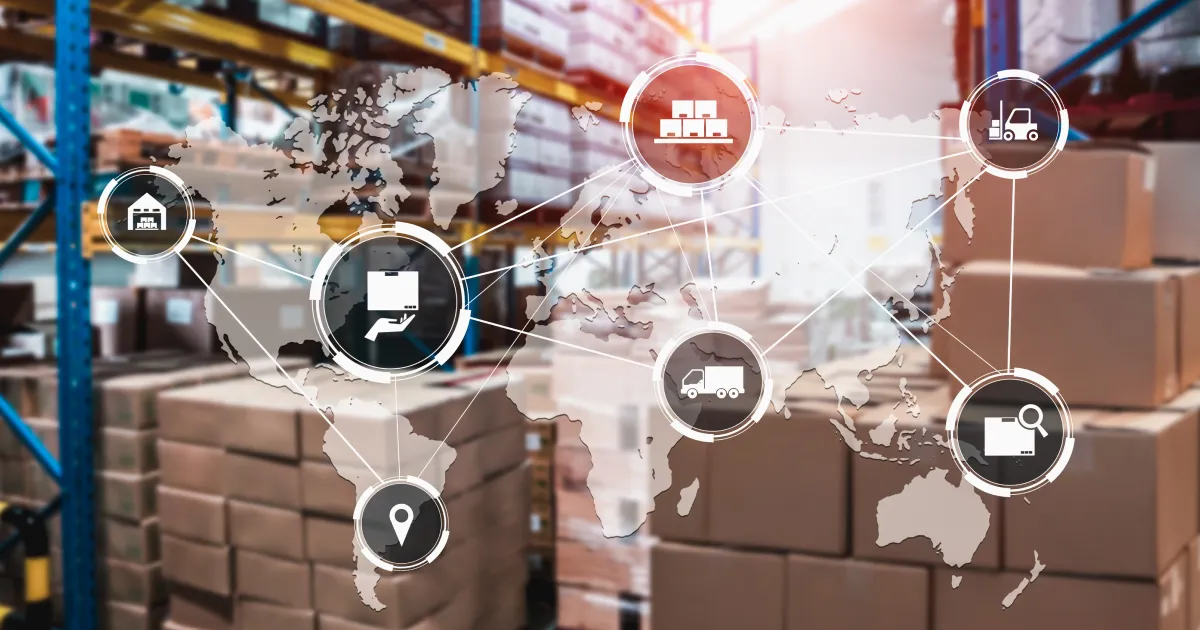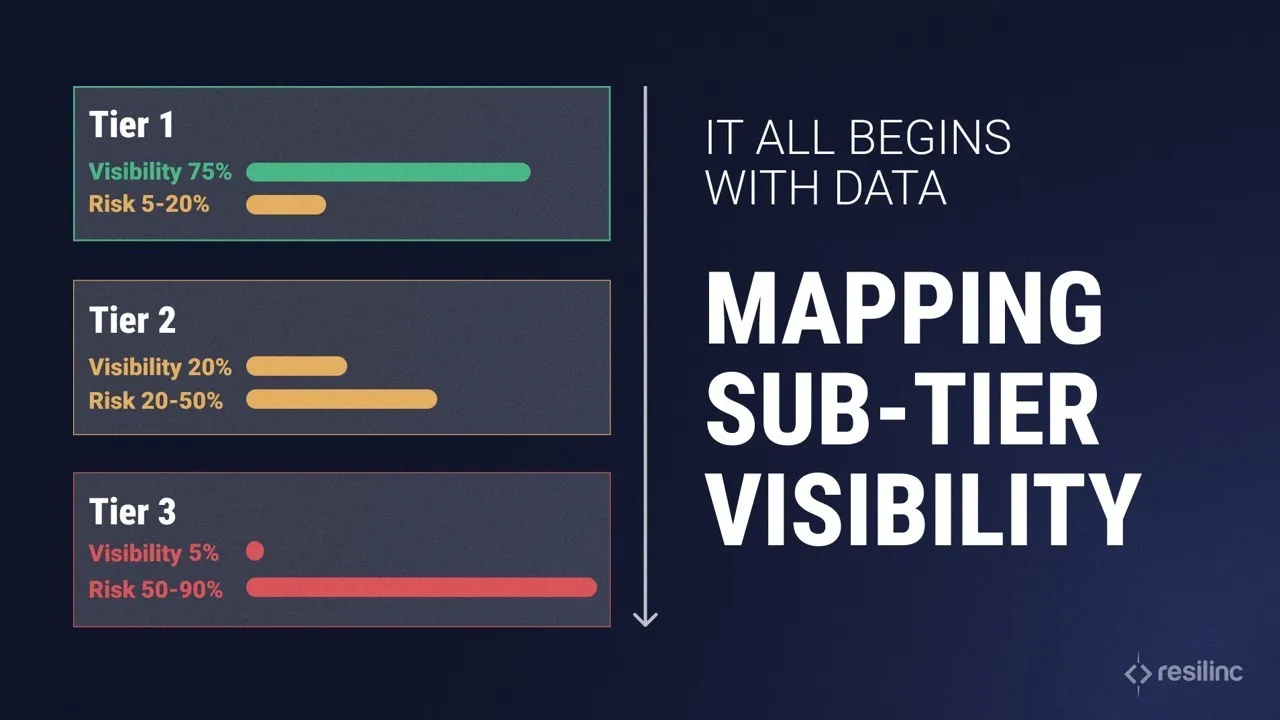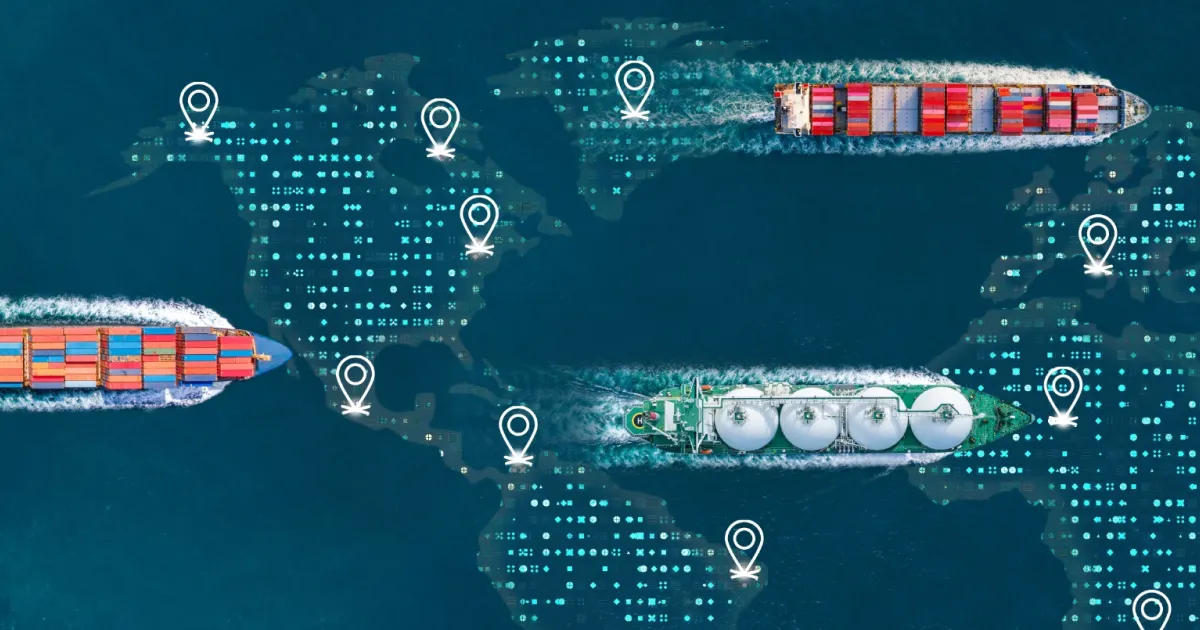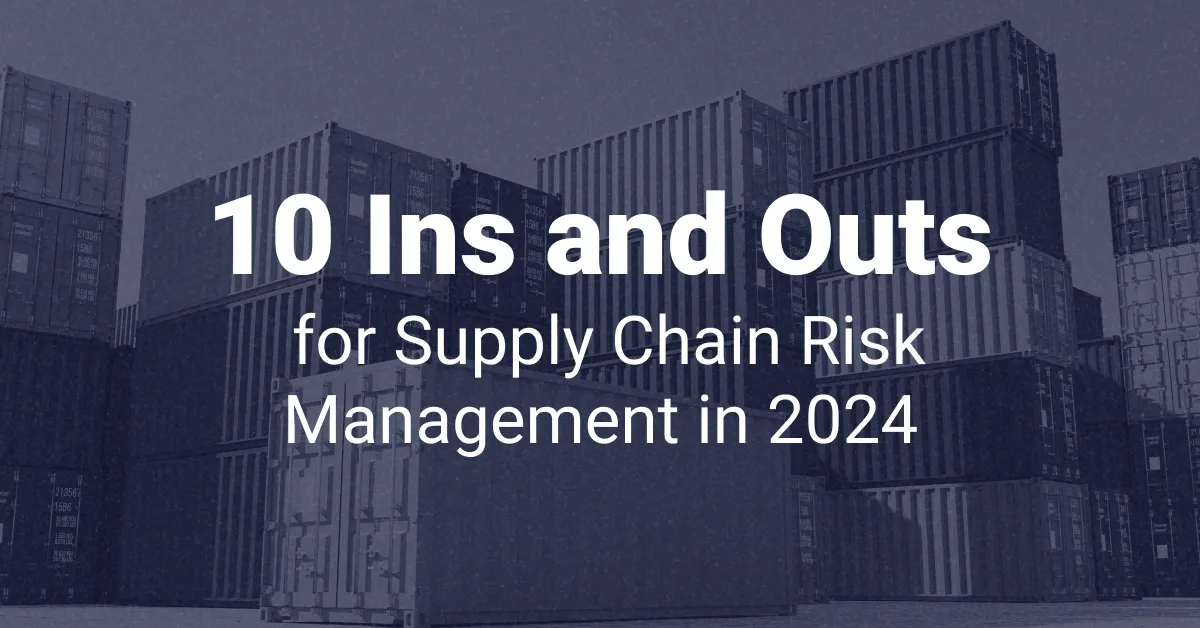Learn the best practices for supply chain risk management in 2024 from Resilinc, the gold standard for supply chain resiliency.
Out with the old and in with the new! As risk managers audit their vendors and programs at the start of the year, it’s also time to clean up old strategies and supply chain practices. What practices does your company hang on to that are old hat? Are those strategies costing your company money, time, and even market share?
In this blog, our supply chain experts share their list of ins and outs for supply chain risk management in 2024, from diversifying your supplier base to mapping your supply chain down multiple tiers. Get ready for a resiliency refresh with these supply chain risk management best practices.

1. Diversify your supplier base

Single sourcing presents a huge risk for companies in all industries, especially as geopolitical disruptions are on the rise. Picture this: a critical part of your product is only made in one factory in Taiwan. This is very possible, considering 60% of the world’s semiconductors are made in Taiwan. In this case, what would happen if China invaded Taiwan? Your company could lose access to that critical part, which could halt your entire supply chain as your company scrambles for an alternative supplier during the aftermath of the disruption.
This isn’t a change that can happen overnight, so it’s best to start as soon as possible. Start diversifying your supplier base by adopting a technology that provides transparency in supplier relations—so you know exactly where your single-source dependencies lie in your supply chain. Resilinc’s Multi-Tier Mapping solution is powered by 12 years of supplier-validated data—with 800K suppliers, one million sites, and four million parts—giving you enhanced visibility into your supply chain so you can discover hidden weaknesses, like single sources.
2. Proactively plan for supply chain disruptions

When a disruption happens, how quickly does your company find out about it? How long does it take for your team to identify how the disruption will impact supplier sites, products, and parts? It’s important to have plans in place to efficiently react to disruptions, however, if this is your only plan—you will always be behind the curve.
Instead, make sure to include proactive risk mitigation efforts in your strategy, such as mapping your supply chain down multiple tiers, assessing vulnerabilities, and benchmarking your suppliers. Risk management doesn’t start when a disruption happens, it starts with a more resilient supply chain. Learn more in our blog: Supply Chain Risk Management vs. Supply Chain Resilience.
3. Map your supply chain down multiple tiers

Do you know who your supplier’s suppliers are? 85% of supply chain disruptions happen in the indirect Tier-2+ supply chain. Most companies have visibility into their direct suppliers, but many do not know the distributors, contractors, and lower-tier vendors that make up the bulk of their supply chains. Companies must start mapping supply chains multiple-tiers deep. The goal is to be able to trace individual parts to the exact site where they are manufactured. “Part-site” mapping adds the most value because it enables manufacturers and companies to know exactly what parts and materials may be delayed by an event affecting a specific site.
4. Use both AI and supplier-validated mapping

Okay, so you should map your supply chain, but what kind of mapping should you use? Some companies are led to believe that AI mapping is a miracle, an all-in-one solution to mapping the supply chain. It’s fast, cost-effective, and easy to use. All those things may be true, but companies cannot rely solely on AI mapping. It’s great for getting started and getting a snapshot of your suppliers. However, the next step is to actually confirm your suppliers using supplier-validated mapping.
We highly recommend a hybrid approach to optimize for speed and coverage. AI mapping provides a “most likely” view of your supply chain quickly, while supplier-validated mapping requires more time but gives you the most accurate picture of your supply chain. Learn more about the benefits of using both: Multi-Tier vs. AI Mapping: What’s the Difference?
5. Understand and invest in your suppliers’ capabilities

Are your suppliers prepared for a supply chain disruption like a factory fire or a cyber attack? As we mentioned already, 85% of supply chain disruptions happen in your indirect supply chain. If you don’t know what mitigation strategies your suppliers have in place, you’re putting your supply chain at risk. Cybersecurity, in particular, gets pushed to the side in favor of other risk management efforts.
However, in 2023, the average cost of a data breach worldwide was $4.45 million—with the most impacted industries being Healthcare, Life Sciences, High-Tech, SaaS, and General Manufacturing, according to Resilinc data. Discover how to increase your cyber security efforts in our blog: 10 Ways to Prevent Cyber Attacks Across Your Supply Chain.
6. Focus on materials critical to your highest revenue products

Procurement and supply chain managers need to adopt a new mindset for building more resilient supply chains. The old method of prioritizing cost reductions from the largest suppliers by spend, can result in crushing losses of revenue and profits. In fact, shortages of cardboard containers and generic parts costing less than 30 cents have halted assembly lines for weeks. Revenue impact needs to be the new way to segment and define critical suppliers, according to Resilinc CEO Bindiya Vakil. Read more in this article written by Bindiya Vakil: Resilient Supply Chains: Why Every Supplier Counts.
7. Integrate supplier risk insights into planning and procurement strategy

Neglecting supplier data and supply chain disruption data is out with the end of 2023! This year, companies must start integrating sub-tier visibility and disruption mitigation insights into planning and execution architecture. As we’ve touched on already, a solid risk management program doesn’t start when a disruption occurs; it starts with building your supply chain. Supply chain management professionals must continuously measure risk, translate that risk into action, and establish a culture of continuous measuring. Learn more in this journal, co-authored by Resilinc’s CEO and Co-Founder Bindiya Vakil: Creating Resilient Supply Chains Through a Culture of Measuring.
8. Collaborate directly with your suppliers
 Suppliers are essential to the success of large companies in every industry, and many of the world’s most successful companies collaborate intensively with their suppliers. Resilinc enables direct communication between customers and their suppliers when it comes to mitigating supply chain disruptions—fast. One way– in particular–is via supplier risk assessments. Once a customer’s supplier network is mapped on Resilinc’s platform, risk surveys are launched to individual suppliers; supply chain weaknesses are flagged; strategies and playbooks to reduce risks are offered; and collaboration to actively mitigate risk is facilitated. Learn more about the importance of supplier collaboration from an expert with first-hand experience: Q&A with Veteran Supply Chain Practitioner Sidney Johnson.
Suppliers are essential to the success of large companies in every industry, and many of the world’s most successful companies collaborate intensively with their suppliers. Resilinc enables direct communication between customers and their suppliers when it comes to mitigating supply chain disruptions—fast. One way– in particular–is via supplier risk assessments. Once a customer’s supplier network is mapped on Resilinc’s platform, risk surveys are launched to individual suppliers; supply chain weaknesses are flagged; strategies and playbooks to reduce risks are offered; and collaboration to actively mitigate risk is facilitated. Learn more about the importance of supplier collaboration from an expert with first-hand experience: Q&A with Veteran Supply Chain Practitioner Sidney Johnson.
9. Use AI-powered supply chain monitoring

In the world of supply chain, time is everything. The faster you know about a disruption, the faster you can respond, and the more likely you are to mitigate the risk. AI-powered supply chain monitoring helps companies sift through millions of news sources to uncover potential supply chain disruptions as soon as possible—saving managers time and money. Resilinc’s AI-powered 24/7 supply chain monitoring system, EventWatchAI, makes it even easier. EventWatchAI scans 104 million sources and sites worldwide and sends tailored alerts directly to your inbox.
10. Chose a technology provider as a resiliency partner

While it would be great if every company could build its own resiliency platform and system in-house, it’s unfortunately not feasible. Many companies waste time, money, and valuable resources trying to do just that and end up with a platform that doesn’t quite stack up against the competition. Instead, we suggest following Gartner’s recommendations and choosing a technology provider, like Resilinc, as your resiliency partner. Select a provider that can comprehensively address your current and future resiliency plans.
Put Your Best Foot Forward in 2024
Supply chain management professionals know that the supply chain is constantly changing. Already this year:
- The Red Sea Shipping Crisis has sent shockwaves across the global supply chain
- The Panama Canal is still experiencing a massive drought
- Japan faced a 7.6 magnitude earthquake on New Year’s Day
Working in supply chain, you must be prepared for the unexpected—and that starts with making your supply chain more resilient. This year, start by being more proactive in your supply chain risk management. Not sure where to get started? See how Resilinc can help you on your journey to supply chain resilience: Request a demo today.





